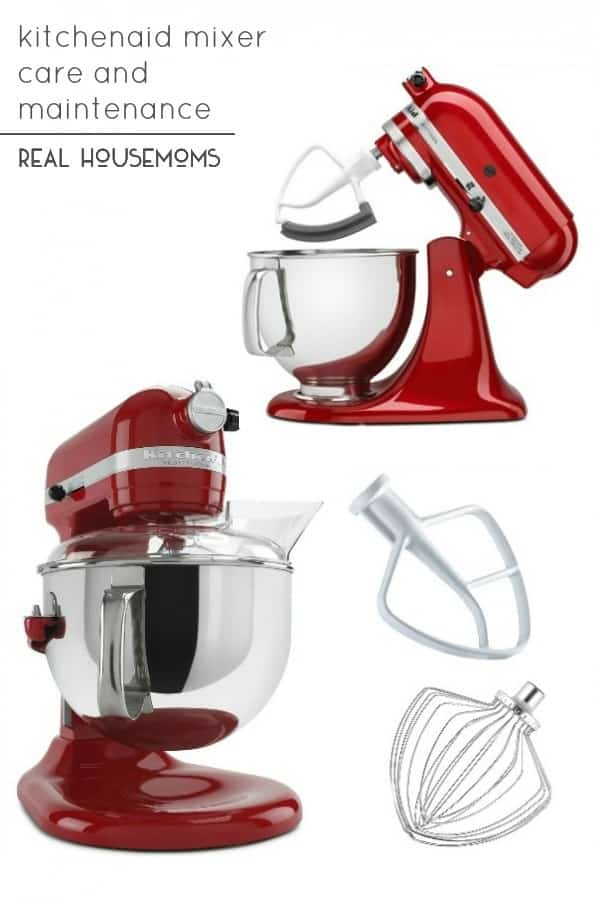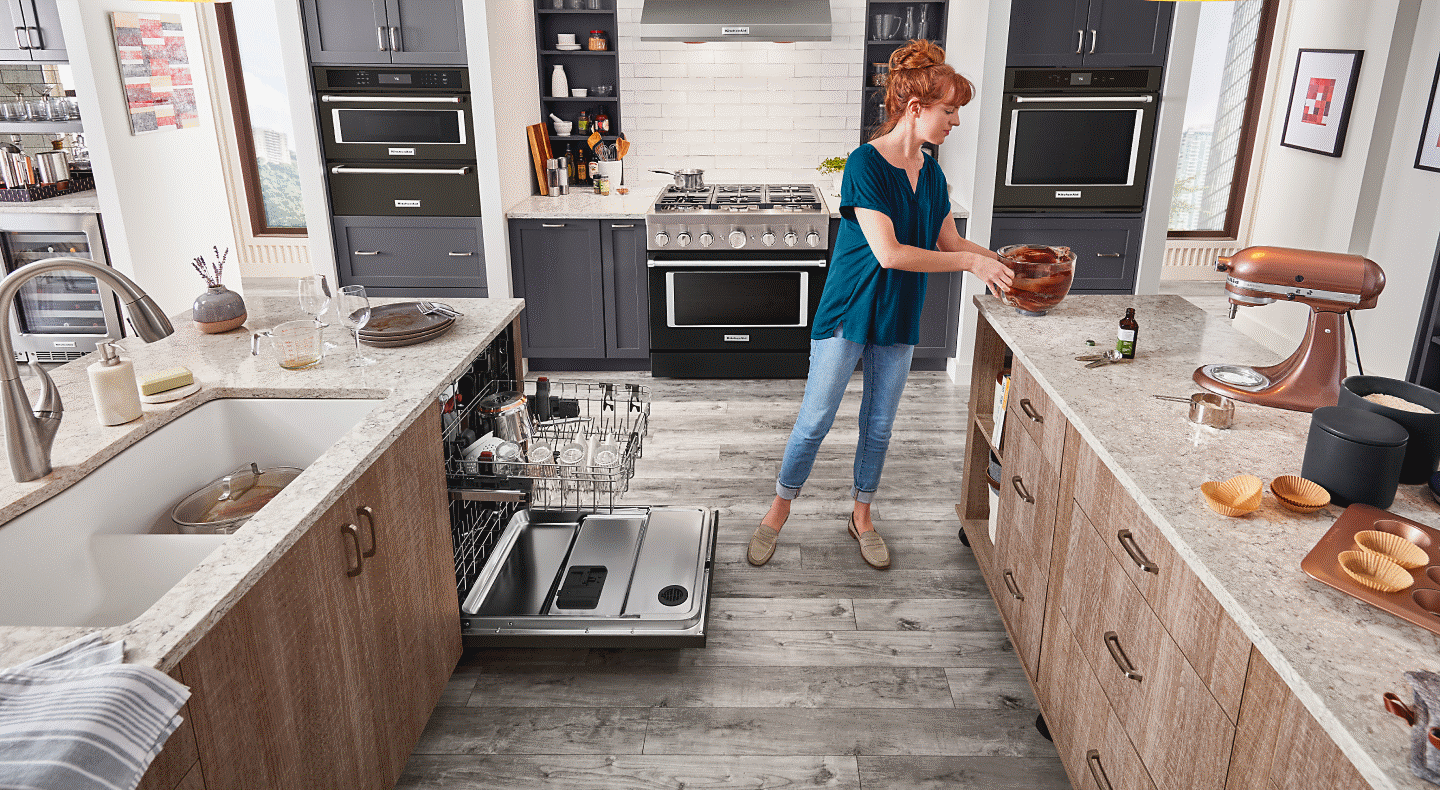Melvin is an expert for portable products.The site is for sharing everything about portable products for online buyers.
Yes, Kitchenaid bowls can be cleaned in the dishwasher, making cleanup quick and easy. When it’s time to clean your Kitchenaid bowl, you may wonder if it is dishwasher safe.
Luckily, Kitchenaid bowls are designed to be dishwasher safe, allowing for convenient and effortless cleanup. So, you can enjoy the benefits of a sparkling clean bowl without the hassle of hand washing. Whether you’re mixing dough, batter, or any other ingredients, you can simply place the bowl in the dishwasher, saving you time and effort in the kitchen.
However, it’s always best to consult the manufacturer’s instructions or check the specific model of your Kitchenaid bowl for any restrictions or guidelines regarding dishwasher use.
Factors To Consider Before Putting The Kitchenaid Bowl In Dishwasher
Before putting the Kitchenaid bowl in the dishwasher, there are several factors to consider:
1. Material composition of the bowl: The dishwasher may be suitable for some materials, such as stainless steel or glass, but may not be recommended for other materials, like plastic or coated bowls. Check the manufacturer’s guidelines to ensure the bowl is dishwasher safe.
2. Manufacturer’s guidelines and recommendations: The manufacturer provides specific instructions on how to clean the bowl, including whether it can be placed in the dishwasher. It is important to follow their recommendations to avoid damaging the bowl or voiding any warranties.
3. Dishwasher settings and features: Different dishwashers have varying settings and features that may affect the bowl’s compatibility. For example, some dishwashers have high heat or intense cleaning cycles that may be too harsh for certain materials. Adjust the dishwasher settings accordingly.
4. Potential impact on the bowl’s longevity and performance: Continuous exposure to the dishwasher’s hot water and detergent may gradually affect the bowl’s appearance, durability, or performance over time. Consider the long-term impact before deciding whether to put the bowl in the dishwasher.
Exploring Different Kitchenaid Bowl Materials And Dishwasher Suitability
When it comes to cleaning your Kitchenaid bowl, one of the questions that often arises is whether it can go in the dishwasher. Let’s explore the different materials of Kitchenaid bowls and their suitability for the dishwasher.
Stainless Steel Bowls
Stainless steel bowls are a popular choice due to their durability and resistance to stains and odors. They are generally dishwasher safe, making cleanup a breeze. However, it’s important to note that some stainless steel bowls have plastic or silicone components, such as handles or lids, which may not be dishwasher safe. Always check the manufacturer’s instructions before placing them in the dishwasher.
Glass Bowls
Glass bowls offer a sleek and elegant look to your kitchen. They are generally dishwasher safe and do not retain odors or flavors. However, they can be heavy and prone to breaking if mishandled. Take care when placing them in the dishwasher to avoid any potential damage.
Ceramic Bowls
Ceramic bowls add a touch of sophistication to your kitchen. They are generally dishwasher safe, but it’s important to handle them with care as they can be fragile. Check the manufacturer’s instructions for any specific care recommendations.
Plastic Bowls
Plastic bowls are lightweight and convenient for everyday use. While many plastic bowls are dishwasher safe, some may not be able to withstand high temperatures and may warp or crack. Always check the manufacturer’s instructions to ensure they are dishwasher safe.
Proper Maintenance And Care For Kitchenaid Bowls, Whether Dishwasher-safe Or Not
Proper maintenance and care is essential for Kitchenaid bowls, regardless of whether they are dishwasher-safe or not. When hand-washing the bowls, it is important to use gentle techniques and take necessary precautions. Avoid using harsh scrubbing brushes or abrasive cleaners, as they can damage the surface of the bowl. Sensitive attachments, such as dough hooks or whisks, should be washed separately to prevent tangling or damage.
The drying method varies depending on the material of the bowl. If the bowl is made of stainless steel, it is recommended to air-dry or use a soft cloth to dry it. For glass or ceramic bowls, it is best to hand-dry them with a soft towel to prevent any possible breakage.
Prior to use, it is crucial to ensure that the bowl is clean and free from any residue. This can be accomplished by thoroughly rinsing the bowl and checking for any leftover food particles. Taking these steps will help prolong the lifespan of your Kitchenaid bowls and keep them in optimal condition.
Alternative Cleaning Methods For Kitchenaid Bowls
When it comes to cleaning your kitchenaid bowls, there are several alternative methods to using a dishwasher. Hand-washing with mild detergents is a gentle yet effective approach. Simply fill a sink or basin with warm water and a few drops of mild dish soap. Use a soft sponge or cloth to scrub the bowl, paying extra attention to any stubborn stains.
If you’re dealing with tough stains, vinegar and baking soda can be a powerful combination. Create a paste by mixing equal parts vinegar and baking soda, then apply it to the stained areas of the bowl. Let it sit for a few minutes before scrubbing with a sponge or brush and rinse thoroughly.
Another method is to soak the bowl in warm water and dish soap. This can help to loosen any stuck-on food particles, making them easier to remove. After soaking for a while, use a sponge or brush to clean the bowl, then rinse well.
In addition, there are specialized bowl cleaning tools available in the market that can make your cleaning process easier. These tools are designed specifically for cleaning the tight curves and hard-to-reach areas of the bowl.
Common Misconceptions And Pitfalls When Dishwashing Kitchenaid Bowls
There are several common misconceptions and pitfalls to be aware of when it comes to dishwashing Kitchenaid bowls. One of the main misunderstandings is the dishwasher-safe label. While many Kitchenaid bowls are labeled as dishwasher-safe, it is important to read the fine print and check the manufacturer’s instructions. Some bowls may have specific requirements, such as using the top rack of the dishwasher or excluding certain attachments.
In addition to overlooking the hidden cleaning instructions, neglecting to remove sensitive attachments can also lead to damage. These attachments, such as beaters or whisks, may not be dishwasher-safe and should be washed separately by hand. Failure to remove them could result in warping or discoloration.
Improper loading techniques can also have consequences for Kitchenaid bowls. It is essential to load them securely, ensuring they are not touching other items or the dishwasher walls. This prevents them from moving or vibrating during the wash cycle, which can cause scratching or chipping.

Credit: realhousemoms.com
Final Thoughts And Verdict On Dishwashing Kitchenaid Bowls
If you are wondering whether the Kitchenaid bowl can go in the dishwasher, the answer is not straightforward. The compatibility of Kitchenaid bowls with dishwashers depends on the material they are made from. Here is a summary of dishwasher compatibility for each bowl material:
| Bowl Material | Dishwasher Compatibility |
|---|---|
| Stainless Steel | Safe for dishwashing |
| Glass | Safe for dishwashing |
| Ceramic | Handwashing recommended |
| Plastic | Handwashing recommended |
If you want to extend the longevity of your Kitchenaid bowl, it is recommended to handwash bowls made from ceramic or plastic. While stainless steel and glass bowls are usually safe for dishwashing, taking extra care can help maintain their overall quality. Avoid using abrasive cleaners or harsh chemicals that may damage the bowl’s surface. Instead, opt for mild dishwashing soap and a soft sponge or cloth for cleaning.
When it comes to using your Kitchenaid bowl, it’s important to balance convenience with proper care. While dishwashing may save time, handwashing certain bowl materials can help prevent any potential damage and maintain their pristine condition in the long run.
Frequently Asked Questions For Can Kitchenaid Bowl Go In Dishwasher
Can I Put My Kitchenaid Bowl In The Dishwasher?
Yes, you can safely clean your Kitchenaid bowl in the dishwasher. All Kitchenaid mixing bowls are dishwasher safe, making clean-up a breeze.
Is It Safe To Put A Glass Kitchenaid Bowl In The Dishwasher?
Yes, Kitchenaid glass bowls are dishwasher safe. However, it is recommended to place the bowl on the top rack to avoid any potential damage from the high heat and water pressure in the dishwasher.
What Is The Best Way To Clean A Kitchenaid Stainless Steel Bowl?
To clean a stainless steel Kitchenaid bowl, simply wash it with warm, soapy water and a soft sponge or cloth. Avoid using abrasive cleaners or scrubbing pads, as they can scratch the surface of the bowl.
Can The Kitchenaid Mixing Bowl Lid Be Washed In The Dishwasher?
Yes, Kitchenaid mixing bowl lids are dishwasher safe. However, it is best to place them on the top rack to prevent any potential warping that may occur from the heat.
Conclusion
After carefully considering the factors involved, it is evident that placing a Kitchenaid bowl in the dishwasher is not recommended. While the material may withstand the dishwasher’s heat and pressure, it can impact the bowl’s longevity and performance. To preserve the lifespan of your Kitchenaid bowl, opt for handwashing with warm, soapy water instead.
Keeping this simple practice in mind will ensure your bowl remains in excellent condition, ready for all your culinary adventures.

Melvin is an expert for portable products.The site is for sharing everything about portable products for online buyers.

